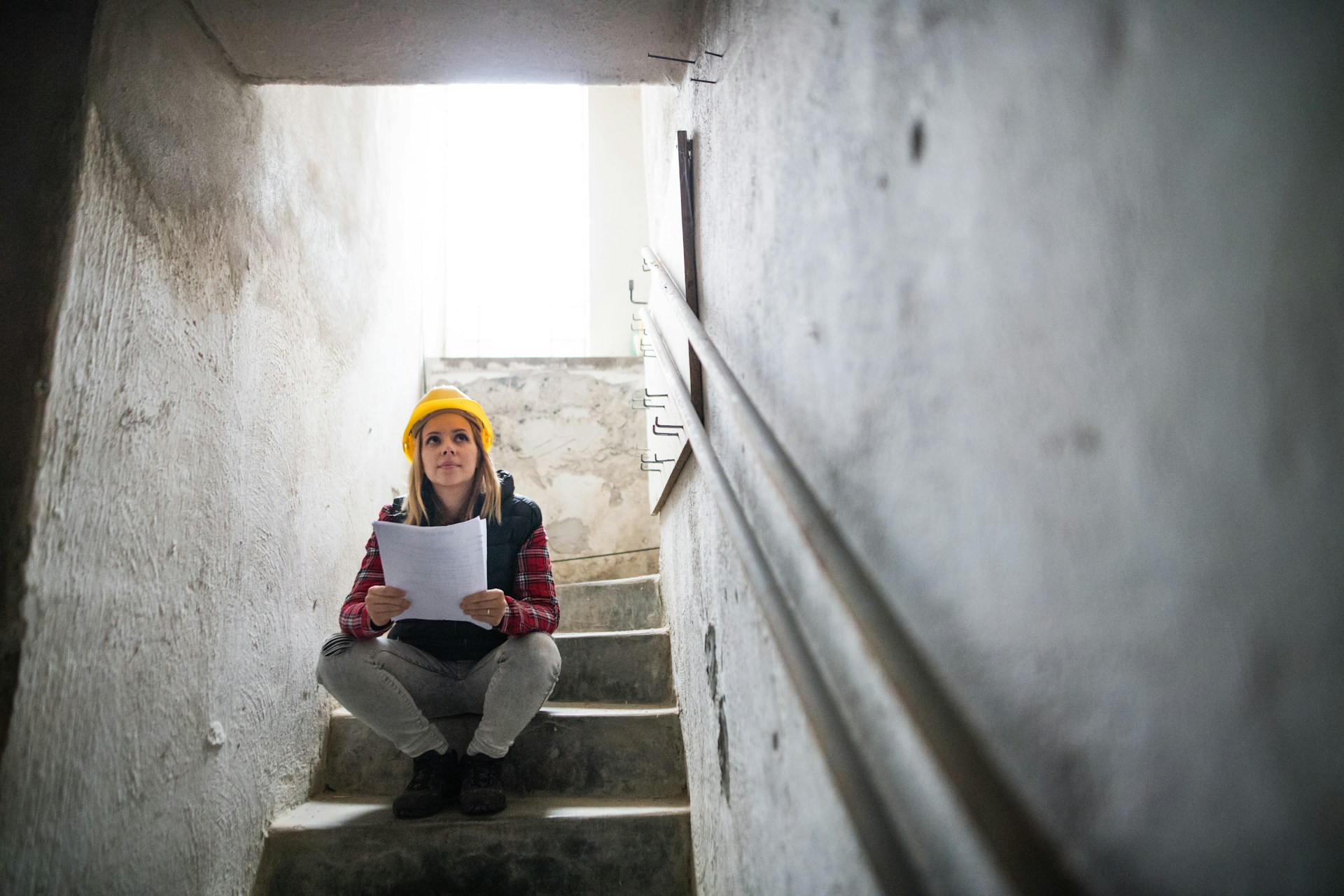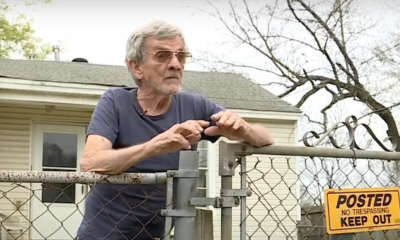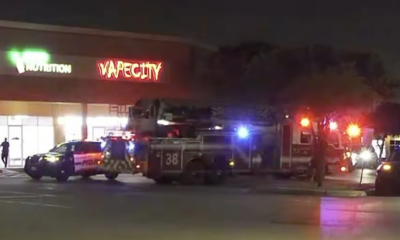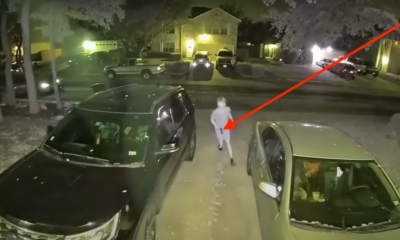Preparedness
Mississippi Shootout Twist: Officers Death Mystery Deepens After New Findings

The tragic deaths of two Mississippi law enforcement officers and the civilian woman who fired the shots is no longer being ruled as a murder-suicide. New findings indicate a far more complex situation.
Public Safety Commissioner Sean Tindell revealed to WLOX News that Amy Brogdon Anderson, who fatally shot the two officers, did not end her own life. Instead, evidence has led authorities to conclude that Officer Branden Estorffe fired the fatal bullet that took Anderson’s life. It seems Estorffe’s gun discharged simultaneously as Anderson’s did.
A bit past midnight, Anderson checked into a Motel 6 accompanied by her eight-year-old daughter and three dogs. However, within an hour she requested the motel’s front desk to call the police, stating her belief that she was being followed. Officers Estorffe and Steven Robin responded to the call and arrived at the motel.
“Ms. Anderson was loading up her car and was apparently attempting to leave the hotel. They were trying to keep her there until Child Protective Services could arrive,” Tindell explained.
The conversation with Anderson lasted roughly forty minutes. The officers became concerned for the welfare of the child present, and consequently, contacted Child Protective Services.
Tragically, the situation escalated into violence. Anderson shot and killed Officer Robin from within her vehicle and then engaged Officer Estorffe in gunfire. Both shot each other fatally while Anderson’s young daughter was in the passenger seat.
A hotel guest noticed the blood-covered child wandering around the SUV post-shooting. The guest took the child into her own room to ensure her safety as additional law enforcement arrived on the scene.
“Momma told me people are trying to kill us,” the young girl reportedly said.
Sylvia Brogdon, Anderson’s former mother-in-law, expressed her sorrow to the New York Post. “Unfortunately she was a very troubled person although we loved her very much. It was a mental illness issue. But she was a good mother and a good veterinarian. She loved her job and if you could see her children you can see she was a good mother. It’s so terrible when someone is a good person but they do something like this and then all the good is erased and people only see the bad,” she shared.
To further examine the circumstances that led to this horrifying event, autopsy and toxicology reports have been ordered. These will help to determine if drugs were a contributing factor in the incident.
More info about the incident below:
Let us know what you think, please share your thoughts in the comments below.

Preparedness
Unlock Survival Secrets Beyond Stockpiling Essentials

When it comes to long-term survival, many people equate preparedness with stockpiling essentials like food and weapons. However, true preparedness encompasses a broader range of skills that go beyond merely accumulating resources. In the event of a crisis, such as an electromagnetic pulse (EMP) event, our ability to rely on traditional skills becomes crucial. These are skills our grandparents likely possessed, but many of us today have never had the opportunity to practice.
One of the fundamental skills for self-reliance is cooking from scratch. The ability to prepare meals using basic ingredients, rather than relying on pre-packaged or canned foods, is invaluable. In times of emergency, when eating out is not an option, those who can cook from scratch will have a significant advantage. As the source material notes, “learning how to cook from scratch is something you cannot afford to ignore.”
Healthcare skills are equally important. In today’s world, it seems that a trip to the doctor is the go-to solution for even minor ailments. However, previous generations knew how to manage their health without relying on doctors and pharmaceuticals for every issue. Learning how to care for yourself and your family without medical intervention can be a vital survival skill.
Growing and foraging skills are essential when store shelves are empty. Gardening and farming require more than just planting seeds; they demand knowledge and physical endurance. Additionally, knowing how to identify and safely forage wild edibles can provide a much-needed food source. As the source material suggests, “learning some of the basics of gardening and foraging now could give you a little head start.”
Sewing skills offer another layer of self-sufficiency. When shopping for clothes is no longer an option, knowing how to make or repair garments becomes crucial. Sewing, along with related skills like spinning, weaving, and knitting, not only allows for clothing repair but also provides opportunities for bartering.
Working with livestock also demands a specific set of skills. Handling animals safely and providing them with medical care can ensure they remain healthy and productive, whether for meat, dairy, or fiber. Even chickens can pose a risk if not managed properly, highlighting the importance of livestock handling skills.
For those who consume meat, hunting, trapping, and butchering skills are indispensable. Procuring meat without relying on grocery stores requires knowledge of various hunting methods and the ability to butcher animals properly to maximize the meat’s utility and safety.
Carpentry and construction skills round out the list of essential survival skills. While building an entire house may not be necessary, the ability to construct or repair simple structures, such as sheds or livestock buildings, is invaluable. These skills also extend to basic home repairs, ensuring a safe and functional living environment.
This is by no means an exhaustive list, but it serves as a starting point for evaluating and expanding your skill set. As the source material advises, “keep learning and adding to your skills bank.” Local community colleges and county extension offices often offer classes in a wide range of practical skills, from backyard chicken keeping to furniture building, often at little to no cost.
Incorporating these skills into your life not only enhances your preparedness but also enriches your ability to thrive in any situation.
Let us know what you think, please share your thoughts in the comments below.
Preparedness
Master the Art of Sheltering in Place for Emergencies

When an unforeseen emergency strikes, the directive to “shelter in place” can be a lifesaver. This involves finding a secure indoor location and remaining there until authorities provide an “all clear” or instruct you to evacuate. Such situations can arise from various threats, including active shooters, severe weather, or hazardous chemical spills.
In the event that local officials instruct you to “stay put,” it is crucial to act swiftly. Tune into local radio or television stations for specific guidance tailored to the emergency. Generally, the first step is to get indoors, bringing along your loved ones, emergency supplies, and pets if possible.
Once inside, identify a safe spot within your location. The ideal spot will vary based on the nature of the emergency. Remain in this location until officials confirm it is safe to leave.
Communication is key during these times. Reach out to your emergency contact to inform them of your situation, whereabouts, and the status of all family members. Use your phone sparingly to ensure lines remain open for emergency responders. Keep your phone accessible for reporting life-threatening situations.
Stay informed by continuously listening to updates via radio, television, or phone. Do not exit your shelter until authorities declare it safe. Should evacuation become necessary, adhere to the instructions provided.
In certain emergencies, such as chemical leaks, it is vital to prevent outside air from entering your space. If officials advise you to “seal the room,” take the following actions: turn off air-moving devices like fans and air conditioners, gather your family and supplies inside, and block any air entry points. Await further instructions from officials.
Once the danger has passed, ventilate your space by turning on fans and other air circulation devices. Everyone should step outside until the building’s air has exchanged with fresh outdoor air.
Preparation is essential for effective sheltering in place, particularly during a chemical attack or leak. Select a room in your home with minimal windows and doors, such as a master bedroom with an adjoining bathroom. For chemical events, choose a room on a higher floor to avoid sinking vapors, unlike other scenarios where lower levels are safer.
Avoid using vehicles as shelters unless absolutely necessary, as they are not airtight enough for chemical protection. If you find yourself needing to shelter in place at home, stock your designated room with essentials such as a flashlight, battery-powered radio, extra batteries, bottled water, and non-perishable food. If bottled water is unavailable, toilet tank water is a viable alternative, but avoid tap water.
To seal the room, pre-cut plastic sheeting to fit windows and doors, securing it with duct tape to create an airtight seal. Cover vents and electrical outlets as well.
If caught in an emergency while driving, and you cannot reach a safe indoor location, pull over to the side of the road, stop the engine, and stay put until it is safe to proceed. Seek shade if it is warm to prevent overheating. Keep your radio on for updates, as modern car radios consume minimal battery power.
Even after receiving clearance to resume travel, continue listening to the radio and follow law enforcement instructions. For a comprehensive guide to preparedness, FEMA offers a free PDF booklet that serves as an excellent resource for starting your journey towards being prepared.
Let us know what you think, please share your thoughts in the comments below.
Preparedness
Homesteaders’ Secret Weapon for Success and Survival

Homesteading is often synonymous with self-reliance, but even the most independent homesteaders need a supportive network. While the dream of living off the land is appealing, the reality can be isolating. It’s crucial to recognize that no one can handle every challenge alone. A strong community is invaluable for both daily support and in times of crisis.
A homesteading community offers a wealth of knowledge and experience. When questions arise, having a group of knowledgeable peers to consult can be a game-changer. Beyond practical advice, these connections provide companionship, easing feelings of loneliness and isolation.
In times of need, a community can be a lifeline. Whether it’s bartering goods, lending a hand with a difficult task, or offering support during a disaster, having a network to rely on is essential. “If you experience a disaster, those closest to you will help you pick up the pieces.”
Building a community doesn’t happen by accident; it requires intentional effort. As adults, forming new bonds can be more challenging than it was on the playground. However, with purposeful actions, these connections can flourish.
Begin by getting to know your neighbors, even if they aren’t fellow homesteaders. They can be your first point of contact in emergencies and may become unexpected allies. Shopping locally is another excellent way to forge relationships. Frequent visits to local farms and markets allow you to meet and support small business owners.
Seek out like-minded individuals by attending events such as gardening classes at the library or visiting the farmers’ market. Online platforms like Meetup and Facebook also offer groups where you can connect with local homesteaders. “Find Like-Minded Individuals: Be intentional about seeking out fellow homesteaders.”
Don’t hesitate to ask for help when needed. People appreciate being needed, and reaching out can open doors to new friendships. Sharing meals is another powerful way to build community bonds. Inviting neighbors or fellow homesteaders for dinner or a potluck can quickly turn acquaintances into friends.
To strengthen these connections, contribute what you can to the community. Whether it’s sharing excess produce, offering skills like knitting, or helping with a neighbor’s big task, every contribution counts. “Find Something to Contribute: Do you have an abundance of fresh produce? Do you have honey from beekeeping?”
Finally, don’t forget to have fun together. Organizing activities like outdoor picnics or games can transform casual relationships into supportive networks. “If you want to move from casual acquaintances to people you can turn to in a crisis, find ways to have fun together.”
If you’re wondering where to find these like-minded individuals, consider visiting local farmers’ markets, libraries, or farm supply stores. Livestock auctions and community-supported agriculture (CSA) groups are also excellent places to meet fellow homesteaders.
By intentionally building and nurturing a community, homesteaders can enjoy the benefits of shared knowledge, support, and friendship, making the journey of self-sufficiency a little less solitary.
Let us know what you think, please share your thoughts in the comments below.
-

 Tactical1 year ago
Tactical1 year ago70-Year-Old Fends Off Intruder with Lead-Powered Message
-

 Tactical1 year ago
Tactical1 year agoVape Shop Employee Confronts Armed Crooks, Sends Them Running
-

 Preparedness11 months ago
Preparedness11 months agoEx-Ballerina’s Guilty Verdict Sends Tremors Through Gun-Owner Community
-

 Preparedness9 months ago
Preparedness9 months agoGood Samaritan Saves Trooper in Harrowing Interstate Confrontation
-

 Tactical1 year ago
Tactical1 year agoMidnight SUV Theft Interrupted by Armed Homeowner’s Retaliation
-

 Survival Stories2 years ago
Survival Stories2 years agoEmily’s 30-Day Experience of Being Stranded on a Desert Island
-

 Preparedness10 months ago
Preparedness10 months agoArizona Engineer’s Headless Body Found in Desert: Friend Charged
-

 Preparedness9 months ago
Preparedness9 months agoBoy Saves Dad from Bear Attack with One Perfect Shot
Had Enough
August 25, 2024 at 11:46 am
the child probably thought that all cops are there to hurt her and her and her loved ones intentionally or thru total ignorance.
Cosmo Aussie
August 25, 2024 at 12:13 pm
Sounds like maybe these two “cops” were the ones that were following her, and she knew something about them that we’ll never know, maybe that’s why she shot them. Through her interaction with them she noticed something about them that convinced her that (it was them) that were following her. Maybe a PAID hit to the cops who were shot didn’t go as planned.
Roland
August 25, 2024 at 12:25 pm
Another case of cops escalating a situation instead of de-escalating it. My bet is the know-it-all cops were at fault.
Golding4
August 25, 2024 at 11:00 pm
and they used the child as an excuse to escalate, they think they can order people around just because they have a badge….but they won’t do it any more. and we don’t know why the woman was scared and feared someone after them. Now is the sadness of a child with no mother, thanks to two cops.
Don
August 25, 2024 at 1:45 pm
They should have hand cuffed her then found out what was going on. You can’t do that to a defenseless female the lawyers would say. That didn’t work out to good. I see there are photos right away. To bad that’s not the case in all crime scenes.
Tim
August 26, 2024 at 8:45 pm
IF there was history of mental illness, she should not have a gun. Family members should have “red flagged” her for public safety (and her & child) reasons. Cops might have messed up also. (need to NOT let the job, go to their head) (you are a public servant, not the Gestapo) citizens have rights